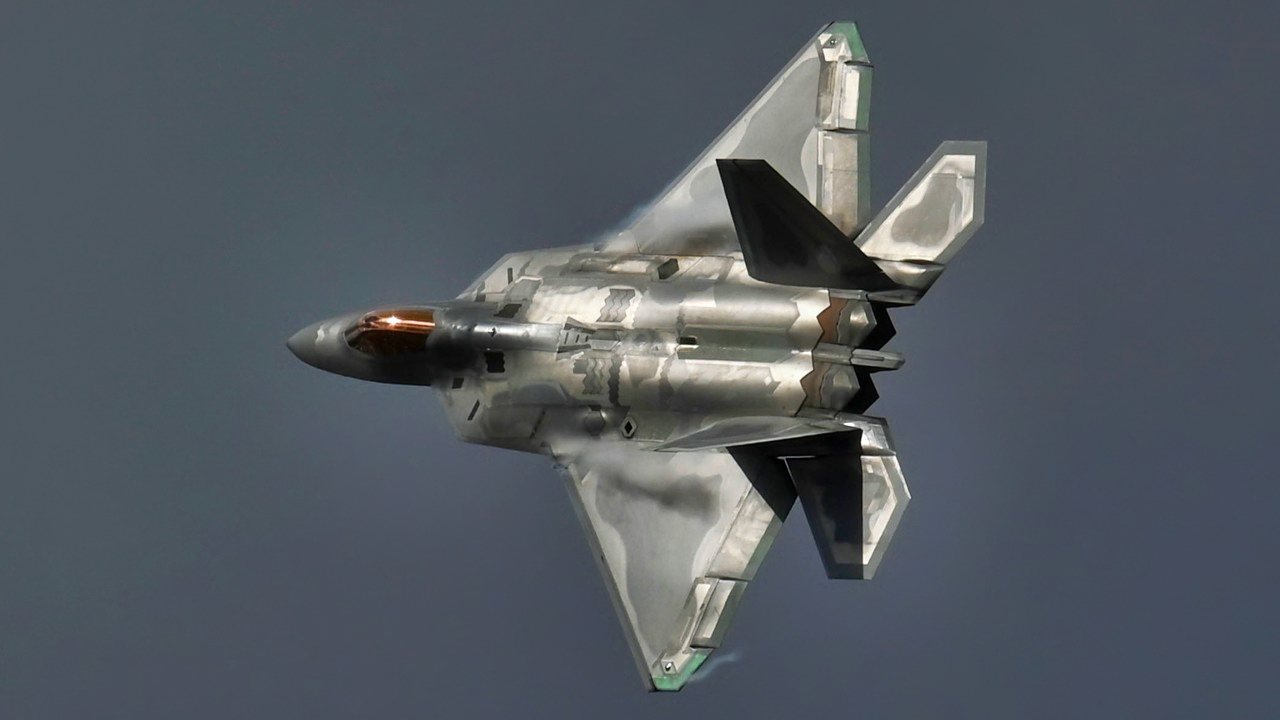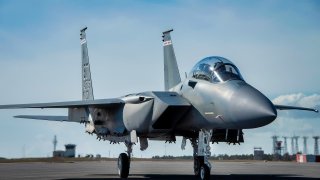Has World War III Already Begun?
Do the barbaric events of October 7, 2023, and the Israeli military campaign in Gaza prefigure a broader, global armed conflict?
On January 2, 2024, Foreign Minister Israel Katz proclaimed “We’re in the middle of World War III against Iran [led] radical Islam, whose tentacles are already in Europe.” He claimed that Israel, in engaging in a war against Hamas and other Iranian proxies, was defending “everyone.” Although his rhetoric may seem overblown to many in the United States and Europe, it should not be dismissed out of hand. Sometimes, regional conflicts, such as the Japanese conquest of Manchuria of 1931-32 or the Spanish Civil War of 1936-39, foreshadow dangers that are more geographically extensive and militarily intense. Do the barbaric events of October 7, 2023, and the Israeli military campaign in Gaza prefigure a broader, global armed conflict? Or is this merely a local conflict, one that is likely unresolvable short of one side or the other engaging in genocide or ethnic cleansing?
We have written this paper in a specific context. Over thirty months ago we made a geopolitical prediction regarding the emergence of a global conflict with four fronts. However, social scientists rarely test their theories by predicting future political events. Who wants to be characterized as a Jonah or a Cassandra? As one eminent strategist argued, the future of war (in detail) is unknowable. And, with perhaps one notable exception, social scientists rarely engage, on a routine basis, in disprovable prediction. Without predictive tools, social scientists and strategists must rely on intuition, a knowledge of history, and good theories—all of which are often in short supply.
A Four-Front Global War?
On the anniversary of D-day, June 6, 2021, The Hill posted our paper, “Could the United States Fight a Four Front War? Not Today.” We predicted that several autocratic powers would launch “simultaneous challenges” designed to diminish the power and influence of the United States. These seemingly distinct conflicts, when viewed from the perspective of Halford Mackinder’s Heartland thesis, should be perceived as separate fronts of a single war by autocratic, territorial powers – either in close cooperation or piggybacking on one or another’s challenge to the established order – on the dominance of the United States and its maritime partners and allies situated along the Eurasian littoral. We argued that the United States should rebuild its naval capacity, and by implication its military-industrial capacity more generally. Specifically, we wrote: “If we are to avoid a multi-front war, the United States must be ready to fight and win conventional conflicts in several places simultaneously and must invest in strengthening our allies’ ability to defend themselves.”
Written on the eve of the withdrawal from Afghanistan, August 31, 2021, our paper suggested that Vladimir Putin’s Russia might once again attack Ukraine to complete the conquest it had initiated in 2014 and thereby dominate the northern littoral of the Black Sea from Crimea to Moldova. To wit:
Russia continues to threaten Ukraine, aiming to consolidate its conquest of Crimea. When Ukraine surrendered its nuclear arms, the U.S. guaranteed Ukrainian territorial integrity in the 1994 Budapest Memorandum. Russia has eloquently demonstrated the low value of such guarantees.
Regarding Iran, we argued that:
Rogue autocratic regimes are a growing threat. Iran sponsors Houthi rebels in Yemen, stokes Shi’ite discontent in the Gulf States and Iraq, dominates Lebanon and Syria through Hezbollah, and threatens shipping through the Gulf of Hormuz. Iran, through its many proxies throughout the Middle East, would seek to dominate the region and instigate further attacks by Hamas on Israel.
Communist China, a new peer adversary for the United States, would be tempted to pile on, seeking to reunify Taiwan with the Mainland as a preliminary to securing control over the South China and East China Seas:
Chinese leader Xi Jinping has declared that Taiwan will be incorporated into China, by force if necessary. China is building a capacity to invade or blockade Taiwan, threatening U.S. reliance on Taiwan for advanced electronics, semiconductors, and as a port to contain Chinese ambitions in the Pacific.
Our intuition suggested that the current administration was squandering a key strategic asset, specifically the deterrence required to cause leaders of autocracies across Eurasia to refrain from testing the resolve of the United States. More recently, we introduced the concept of ‘distributed deterrence’ as a strategy that the United States could leverage to generate more effective deterrence both quickly and inexpensively.
We offered these predictions in the hope that Western policymakers would strengthen the defenses of our allies in Ukraine, Israel, and Taiwan, and that as a result, deterrence would win the day. In effect, we were hoping to be proven wrong, as policymakers considered the dangers of a multi-front war in their planning. Unfortunately, events have begun to unfold as we predicted, because the United States did not act in a timely way to adequately reinforce, train, and support our allies.
Taking Stock
After 30 months, we believe it is now necessary to take stock of our prediction. To do so is not merely to provide a checklist of what we got right or wrong, but more significantly to offer an assessment of how our understanding of the strategic history of Eurasian autocracies led to these predictions.
The Ukraine Front
The 2014 Russian attack on Ukraine resulted in the conquest of Donbas – a territory along the eastern Ukrainian border with Russia – and Crimea. These areas were inhabited largely by ethnic Russians and Russian speakers, though some of them certainly had no desire to be ruled from Moscow. Putin justified this attack as a response to Ukraine’s assault on a population that wished to remain Russian, in a cultural, linguistic, and ethnic sense. The Russian failure to capture a land bridge to Crimea from its conquests in Donbas strongly suggested that another campaign would have to be launched to consolidate territory, provide another supply route to Crimea, and forestall a Ukrainian bid to enter the EU and NATO (here, here, here, and here).

After Russia renewed its war in Ukraine on February 22, 2022, many Western pundits began to speculate on how this second phase would end. The Russian drive on Kyiv, designed to conquer the Ukrainian capital, stalled, and then was turned back. Ukraine forces launched successful counterattacks in the east and south, reconquering some lost territory and fueling a sense that a Ukrainian victory might soon be possible. Meanwhile, as the United States became more committed to the Ukraine cause, few commentators offered an assessment of what the United States should seek as an outcome in line with its own interests, and what means should be deployed in order to generate such an outcome. We indicated that there were essentially three geostrategic outcomes (here, here, and here) that should be considered: Sell out Ukraine to turn Russia from an ally of China into a client of the United States, secure a rapid Ukraine victory that would reinforce the international rules-based order, or allow a stalemate to emerge that would grind down the Russian military machine. After explaining the pros and cons for each, we argued that the most desirable outcome, from an American strategic perspective, was a rapid Ukrainian victory that would result in Ukraine retaking both the Russian naval base in Sevastopol and the Crimean bridgehead. Regardless of the feasibility of reconquering Crimea, the destruction of the Russian Black Sea fleet is highly desirable.
To achieve this goal, the United States had to quickly supply Ukraine with advanced conventional military equipment, including long-range missiles that would enable Ukraine’s forces to attack not only the logistics centers deep in Russian territory but also the Russian Navy. Instead, the Biden administration has released ever more advanced equipment, haltingly and in dribs and drabs, which did not permit the Ukrainian troops to expel Russian forces from Donbas. What weapons were provided were in many cases deliberately crippled so that they could not be used against Russian territory. Extensive public discussions have preceded the delivery of advanced weapons systems, which has made it impossible for the Ukrainians to achieve surprise. Instead of a rapid Ukrainian advance, the current position is one of stalemate, with trial balloons being released for diplomacy (here, here, and here) to restore (a faux) peace to Ukraine. Initiating talks with Putin at this moment, when he has mobilized more manpower and is negotiating the purchase of weapons from Iran and China, signals Western weakness while emboldening enemies of the United States and disheartening Western allies across Eurasia. With a significantly larger economy and population base than Ukraine, and with the ability to operate from a geographic shelter where they cannot be attacked, Russia has marked advantages in a long-war scenario. If Russian propaganda and Western impatience can undermine Western popular support for Ukraine, even maintaining the current stalemate may become impracticable for the Ukrainians. A steady and assured flow of Western support, including the provision of advanced systems is a necessity for the continued viability of the Ukrainian war effort.
Hamas-Israel Front


